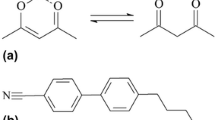Abstract
The atmosphere components have an influence on tribological behaviors of tribo-pairs. Through changing the atmosphere component, the effect of atmosphere component on the tribological behaviors of CrNiMo steel against brass at high sliding velocity was investigated. The wear test was carried out on a high-speed friction and wear test rig whose test atmosphere could be controlled. The tests were performed at four sliding velocities (30, 40, 50, 60 m/s), one contact pressure (1.33 MPa) and two atmosphere components (N2 or O2). The morphologies of the worn surfaces of various pins were observed with a scanning electron microscope. The chemical compositions of the surfaces and subsurfaces for steels were determined with an energy dispersion spectroscopy. The results showed that the wear rate of the steel pins were low all the time with the sliding velocity increasing in oxygen atmosphere, and that the wear rate of the steel pin in nitrogen atmosphere was higher than that of the steel pin in oxygen atmosphere. It was found that the thin and compact oxidation layer formed on the worn surface of the steel in oxygen atmosphere played a key role in wear resistance. However, the wear rate of the steel pin increased rapidly with the sliding velocity increasing in nitrogen atmosphere, which was attributed to the thick and loose surface layer formed on the worn surface of the steel.
Similar content being viewed by others
References
Cote P J, Christopher R. Gas-metal reaction products in the erosion of chromium-plated gun bores. Wear, 2000, 241: 17–25
Lawton B. Thermo-chemical erosion in gun barrels. Wear, 2001, 251: 827–838
Cote P J, Todaro M E, Kendall G M, et al. Gun bore erosion mechanisms revisited with laser pulse heating. Surface Coat Tech, 2003, 163–164: 478–483
Zhang W, Tanaka A, Wazumi K, et al. Effect of environment on friction and wear properties of diamond-like carbon film. Thin Solid Films, 2002, 413: 104–109
Andersson J, Erck R A, Erdemir A. Friction of diamond-like carbon films in different atmospheres. Wear, 2003, 254: 1070–1075
Sopok S, Rickard C, Dunn S. Thermal-chemical-mechanical gun bore erosion of an advanced artillery system part two: Modeling and predictions. Wear, 2005, 258: 671–683
Cote P J, Kendall G, Todaro M E. Laser pulse heating of gun bore coatings. Surface Coat Tech, 2001, 146–147: 65–69
Miyoshi K. Considerations in vacuum tribology (adhesion, friction, wear, and solid lubrication in vacuum). Trib Inter, 1999, 32: 605–616
Miyoshi K. Aerospace mechanisms and tribology technology-case study. Trib Inter, 1999, 32: 673–685
Hiraoka N. Wear life mechanism of journal bearings with bonded MoS2 film lubricants in air and vacuum. Wear, 2001, 249: 1014–1020
Qiu M, Zhang Y Z, Zhu J, et al. Correlation between the characteristics of the thermo-mechanical mixed layer and wear behaviour of Ti-6Al-4V alloy. Trib Lett, 2006, 22: 227–231
Qiu M, Zhang Y Z, Zhu J, et al. The effect of dynamic frictional heating on the dry sliding behaviors of M2 steel against GCr15 steel. Wear, 2006, 261: 767–772
Qiu M, Zhang Y Z, Yang J H, et al. Microstructure and tribological characteristics of Ti-6Al-4V alloy against GCr15 under high speed and dry sliding. Mater Sci Engin A, 2006, 434: 71–75
Author information
Authors and Affiliations
Corresponding author
Additional information
Supported by the National Basic Research Program of China (Grant No. 2007CB607603) and National Natural Science Foundation of China (Grant No. 50775066)
About this article
Cite this article
Qiu, M., Zhang, Y. Effect of different atmospheres on dry friction behavior of steel sliding against brass at high speed. Chin. Sci. Bull. 54, 4589–4593 (2009). https://doi.org/10.1007/s11434-009-0575-7
Received:
Accepted:
Published:
Issue Date:
DOI: https://doi.org/10.1007/s11434-009-0575-7




